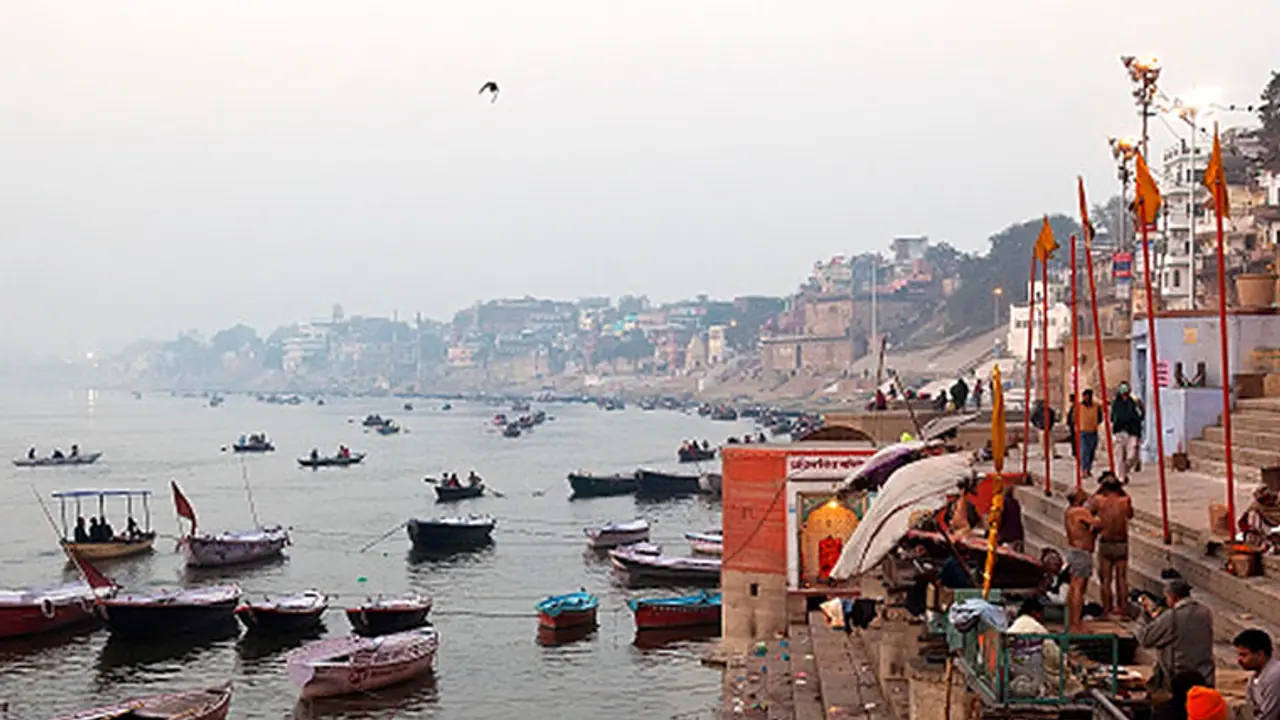Agarwal, who was on a fast-unto-death for the last 109 days, died at the All India Institute of Medical Sciences (AIIMS) in Rishikesh after suffering a heart attack
New Delhi: Following the death of Ganga crusader GD Agarwal on Thursday, the opposition parties have launched a pointed attack on the ruling BJP by claiming that the Modi government has failed to keep its promise to clean the river.
Congress president Rahul Gandhi, vowing to take Agarwal’s fight forward, said the former IITian was “the true son of mother Ganga” and sacrificed his life fighting to save the river.
“Saving the Ganga is like saving the country. We will never forget him and will take his fight forward,” Rahul said.
Also, Samajwadi Party president Akhilesh Yadav said that the BJP had betrayed Agarwal.
"He (Agarwal) was betrayed by the government. The Narendra Modi government promised a clean Ganga, but nothing has been done so far,” added Yadav.
What did Agarwal want?
Agarwal, who was on a fast-unto-death for the last 111 days, died at the All India Institute of Medical Sciences (AIIMS) in Rishikesh after suffering a heart attack.
In his third and final letter to Prime Minister Modi, he wrote, “It was my expectation that you would go two steps forward and make special efforts for the sake of Gangaji because you went ahead and created a separate ministry for all works relating to Gangaji, but in the past four years all actions undertaken by your government have not at all been gainful to Gangaji and in her place gains are to be seen only for the corporate sector and several business houses.”
However, the question now arises how far is the government responsible for this unfortunate event?
The government informed the National Green Tribunal (NGT) that a whopping amount of over Rs 4800 crore was spent to rejuvenate river Ganga and its tributaries since 1986 till June 30, 2017.
The Union water resources minister Nitin Gadkari claimed that the results of the work undertaken by the National Mission for Clean Ganga — the implementation wing of National Ganga Council — will be visible from March next year. A total of 195 projects have been sanctioned for various activities under the programme.
“It is a general perception that nothing significant is being done under ‘Namami Gange’ programme but this is not correct. Our works have even started showing results on the ground,” The Times of India quoted Gadkari as saying.
Moreover, water resources secretary UP Singh, while referring to the water quality monitoring data of the Central Pollution Control Board (CPCB) for the 2015-17 period, said water quality (monitored at 80 locations) showed improvement as three key parameters — biochemical oxygen demand (BOD), dissolved oxygen (DO) and coliforms have increased.
However, some experts remain skeptical about the minister’s promises.
Chandra Bhushan, deputy director general of the Centre for Science and Environment (CSE), had said that reducing pollution in the Ganga needs a multi-dimensional approach and only building sewage treatment plants will not solve the problem.
River expert Manoj Misra of the Yamuna Jiye Abhiyan had said the government should not only aim at ‘Nirmalta’ (clean water) to reduce pollution. “It is silly and unscientific to even think of reviving a river only through actions aimed at ‘Nirmalta’ (clean water). This was the key folly with failed Ganga and Yamuna Actio Plans. So, if we are trying to take the same route having learnt no lessons then we shall be doomed to keep changing the goal post year after year,” Misra added, as reported by TOI.
However, the continuity of Ganga is an old demand that the government had taken cognisance of both under Rajiv Gandhi and Narendra Modi regimes. But dismantling or discontinuing dams is not a feasible proposition, say sources in the water ministry.
Former water minister Uma Bharti, as much as all NGOs that have all turned into experts of river management, thanks to years of experience, has always agreed on one point: Aviral (free-flowing) Ganga is as important as Nirmal (clean) Ganga.
To make the matter more simplified, in 2017, the Comptroller and Auditor General (CAG) said that the absence of a long-term plan and the lack of pollution abatement works and unused funds are hampering the cleaning of the mighty river.
“Funds amounting to Rs 2,133.76 crore, Rs 422.13 crore and Rs 59.28 crore were lying unutilised with the National Mission for Clean Ganga, various state programme management groups and executing agencies/central public sector undertakings (as on 31 March, 2017),” said the CAG’s performance audit report.
Ganga, which is a transboundary river of the Indian subcontinent, not only contributes to the environment, but also has a huge impact on the lives of thousands of people who are dependent on the river for irrigation, water for daily use, rituals and industrial uses.
